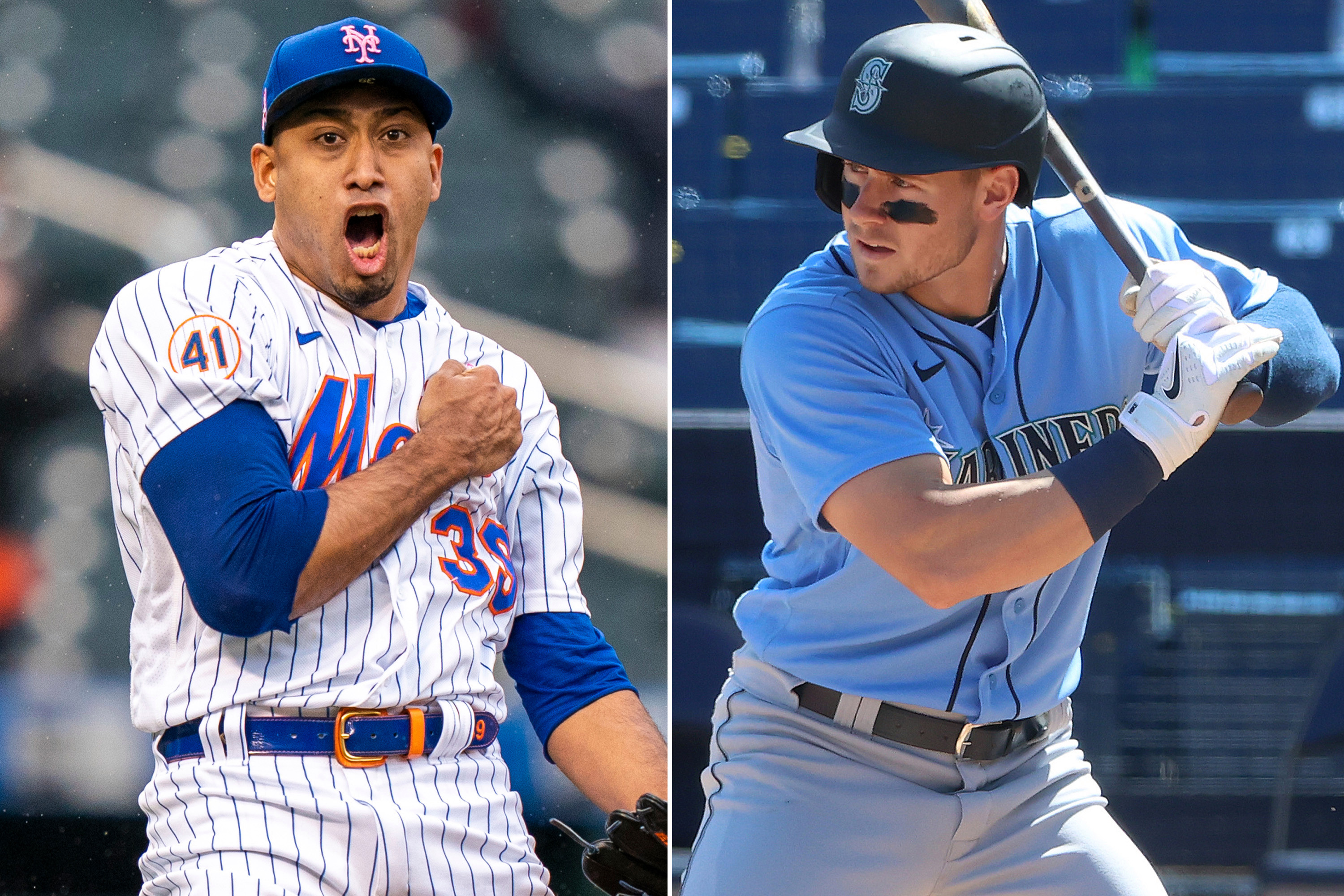More On: amed rosario
Ketel Marte and 7 other trade options for Yankees with Aaron Hicks hurt: Sherman
The only way Mets can salvage destructive Jarred Kelenic trade: Sherman
Indians’ Amed Rosario experiment off to a horrendous start
The test to see if Kelenic is a star befitting his hype begins Thursday. Concurrently, we see if Diaz makes it worthwhile for the Mets to have traded a potential star.
More from:
Joel Sherman

Mets have to prove dysfunction is in the past: Sherman
Yankees' bats facing bedeviling Rays challenge: Sherman
Albert Pujols’ sad Angels ending is latest mega-deal warning: Sherman
Yankees’ questionable rotation defying MLB injury trends: Sherman
Inside Mets' decision to fire Chili Davis and the origin of Donnie Stevenson: Sherman
Jarred Kelenic is going to be called up Thursday by Seattle to make his debut at home against Cleveland.
The clock will begin at that point in the most powerful way on just how destructive the Mets trade of Kelenic was. So far, so bad. Since the Mets dealt Kelenic to the Mariners in December 2018:
1. He has become a top-10 prospect in the sport. If still a Met, he would have provided security if Michael Conforto left via free agency after this season or be one of the most valuable trade chips in the sport — certainly much more valuable than when the Mets took on Edwin Diaz and Robinson Cano.
2. Justin Dunn, the Mets’ first pick in 2016, has become a useful starter (3.51 ERA in five starts), albeit one that still walks too many batters.
3. Cano is amid a season-long suspension for violating MLB’s drug policy a second time (the Mets acquired him after the 2018 campaign, though he had missed half of that year with his first suspension). The Mets are not paying Cano this year. But he returns next season still owed $48 million for two years (the Mariners will pay $7.5 million of that). The Mets will have to decide if he is a sunk cost and just let him go (Cano will be 39). There will probably be a DH in the NL next year as part of a new collective bargaining agreement and the Mets could see if Cano’s usefulness as a hitter endures.
Think of the opportunity costs lost by the Mets of having Cano expensively and not Kelenic inexpensively. That leaves just one avenue to save this trade from all-time infamy — Diaz needs to be at least a high-end closer on a playoff team, perhaps a championship club. If the Mets win the World Series then like the Cubs dealing Gleyber Torres for Aroldis Chapman and winning it all in 2016, the trade becomes worthwhile no matter what. There is only one championship given out annually and the Mets haven’t won it since 1986.
The belief in Diaz remains tenuous largely because his 2019 Mets debut went so poorly: 5.59 ERA and 15 homers in 58 innings (in the regular season, Chapman has allowed 15 homers since 2015, covering 311 appearances and 307 1-3 innings). Over the past two years — albeit in only 40 innings — Diaz has the third best relief Wins Above Average (Fangraphs) behind James Karinchak and Liam Hendriks. The righty has struck out 40.5 percent of batters faced, fifth best among those with at least 30 relief innings. And Diaz had yielded just two homers, or 0.45 per nine innings, 14th best among relievers with at least 30 innings.

The test to see if Kelenic is a star befitting his hype begins Thursday. Concurrently, we see if Diaz makes it worthwhile for the Mets to have traded a potential star.
Who are these players:
Player A: .186/.246/.323-.569 with four homers, four steals and a -0.1 WAR (Fangraphs)
Vs.
Player B: .194/.315/.272-.586 with two homers, one steal and 0.2 WAR.
Because so much has been written about Francisco Lindor’s offense, to date, you might have recognized that he is Player B (stats going into Tuesday).
Player A is the combined efforts of Andres Gimenez and Amed Rosario, the two shortstops sent to Cleveland to help land Lindor. Gimenez had started 21 times at short and Rosario 11 as Cleveland is trying what the Mets merely talked about, playing Rosario in center. Rosario had started 13 games in center and played 17 there in all going into Tuesday and (incredibly small sample size alert) had 0.2 defensive WAR (Fangraphs), which tied him for 19th among those with at least 100 innings at the position with, among others, Mike Trout.
Rosario is actually in the negative realm (-0.2) as a shortstop. Gimenez, whose calling card is defense, was at 1.8 and Lindor at 2.2. Want a surprise? The major league leader at shortstop was (drum roll) Gleyber Torres, who was tied at 3.1 with Washington’s Trea Turner.
Again, these are small sample sizes and, while defensive metrics have come a long way, they remain the most imprecise statistical measurable on the field. The eye test says that after a bad first two weeks in the field, Torres has played much better at shortstop, in part because he has employed a mechanism to quickly get rid of throws rather than dawdle. Still, the “best” defensive shortstop ranking suggests we still have a long way to go with defensive metrics.
This story originally appeared on: NyPost - Author:Joel Sherman


















